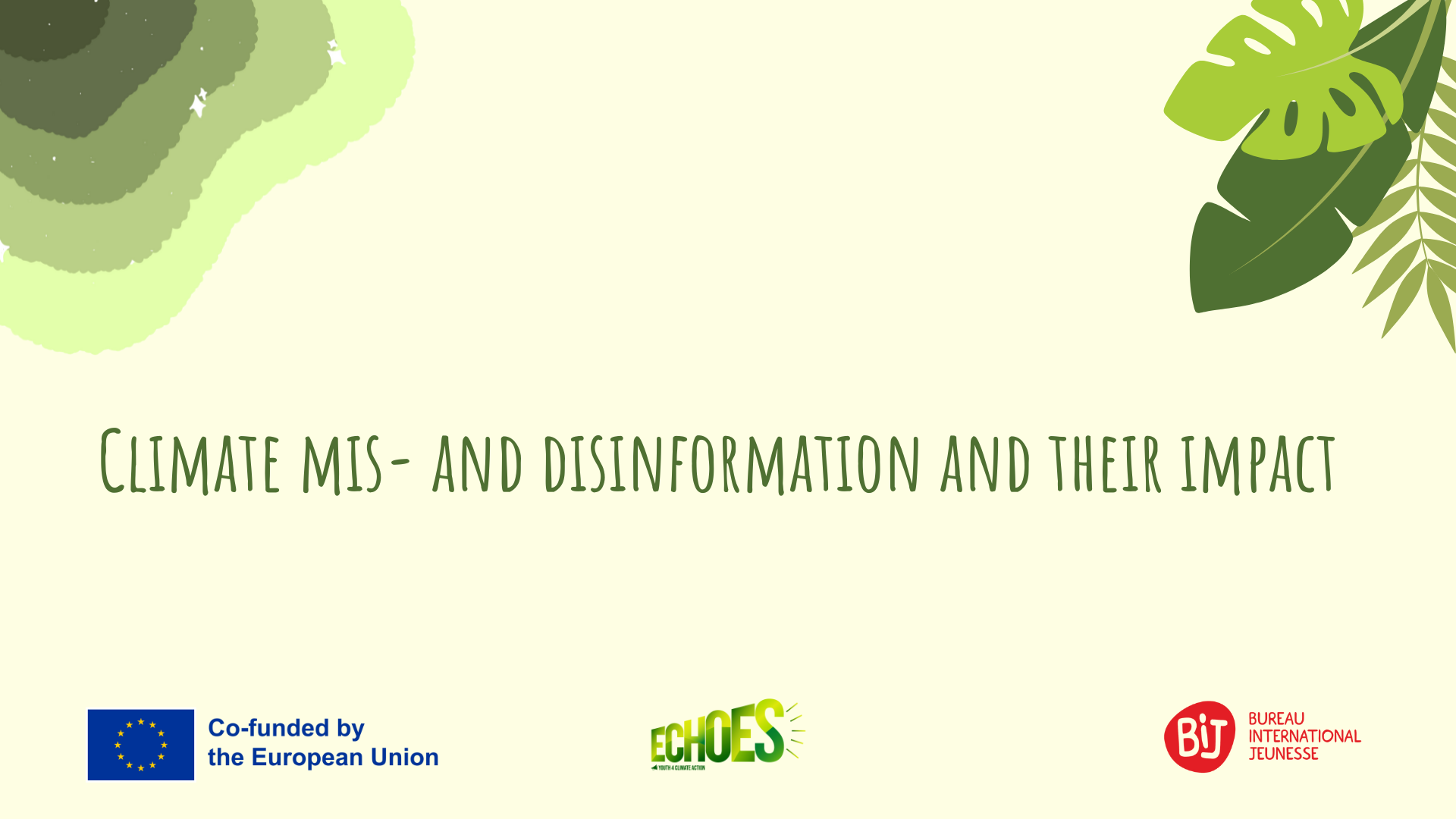
Climate mis- and disinformation and their impact
In today’s world, the widespread se of social media networks has helped the spread of information that may not always be based on facts. Mis- and disinformation, in particular, can have significant consequences for the general public. But before diving into these impacts, it is important to understand the difference between the two terms. While they are often used interchangeably, there is a crucial distinction: misinformation refers to the unintentional spread of inaccurate information, usually due the mistake or human error. Disinformation, on the other hand, involves the deliberate spread of false information, driven by a specific agenda or purpose.
One major reason for delays in addressing climate change is the lack of accurate information about the current environmental situation. This not only misleads the general public but also those responsible for shaping policies. Sometimes, false or misleading information is intentionally spread—such as claims that human activity has no harmful impact on the climate or even that climate change doesn’t exist at all. Such narratives can undermine climate advocacy and delay essential initiatives by downplaying the urgency and importance of the issue.
Another major consequence of climate disinformation is the growing lack of trust in science. When false information about climate issues spreads, it causes the general public to question the credibility of scientific research and findings. Disinformation campaigns often claim that scientists manipulate data or engage in cherry-picking to support false narratives. These efforts create widespread doubt about the reality of climate change and the role of human activity in causing it. As a result, people become increasingly skeptical about what to believe, making it much harder to build the consensus needed for effective climate action.
A very crucial consequence of this phenomenon is that it creates social polarization, which is even easier to amplify through social media. These platforms provide fertile ground for division, as it is relatively easy for users to share unverified content without accountability. Algorithms often prioritize engagement over accuracy, pushing emotionally charged or controversial posts to the forefront. As a result, people are frequently exposed to content that reinforces their existing beliefs, while opposing views are either dismissed or entirely hidden. This echo chamber effect deepens divisions, especially on sensitive topics like climate change. When false or misleading narratives spread unchecked, they not only distort public understanding but also lead to ideological conflicts that hinder collaborative efforts toward addressing the climate crisis.
Mis- and disinformation also make it harder to create and apply climate policies. When people believe false claims, they may resist important actions like reducing emissions or switching to clean energy. This can pressure governments to avoid strong measures. On a global level, misinformation can cause
mistrust between countries, making cooperation on climate issues more difficult.
How to tackle the phenomenon of mis- and disinformation?
Tackling mis- and disinformation requires a combination of critical thinking, education, and responsible communication. A key first step is to promote media literacy, which will encourage individuals to question the source and evidence and double-check the encountered information. Checking the facts before sharing information can be a protective factor in limiting the spread of false narratives. Technology can also function as an effective tool for tackling this issue. Tools like browser extensions such as Adblock, News Guard, Meta Bias Fact Check can make it easier for users to identify misleading content. One important aspect of tackling the spread of false information is effective communication, especially with those who are unknowingly sharing it. In other words, when we notice someone spreading incorrect or misleading information, it is more helpful to offer accurate facts than to respond with confrontation or criticism. A particularly useful technique for this is the “truth sandwich” method. This involves starting with the truth, briefly addressing the false claim, and then repeating the truth to reinforce the accurate message.
In conclusion, combating this phenomenon requires a multifaceted approach. Therefore, programs like ECHOES play a crucial role in equipping individuals with tools to think critically, challenge misleading content, and engage in evidence-based conversations.
References:
Clark, R.P. (2020, August 18). How to serve up a tasty truth sandwich. Poynter. https://www.poynter.org/reporting-editing/2020/how-to-serve-up-a-tasty-truth-sandwich/
European Commission (n.d.). Climate disinformation. https://climate.ec.europa.eu/eu-action/climate-disinformation_en
European Commission. (n.d.) Toolkit for teachers on disinformation: How to spot and fight disinformation. https://learning-corner.learning.europa.eu/learning-materials/staying-vigilant-online-can-you-spot-information-manipulation_en
Falkenberg, M., Galeazzi, A., Torricelli, M. et al. Growing polarization around climate change on social media. Nat. Clim. Chang. 12, 1114–1121 (2022). https://doi.org/10.1038/s41558-022-01527-x
Kuebler, M. (2024, January 2023). What is climate misinformation, and why does it matter? Deutsche Welle. https://www.dw.com/en/what-is-climate-misinformation-and-why-does-it-matter/a-68025967
Sethi, P. (2024, April 22). What are climate misinformation and disinformation and what is their impact? Grantham Research Institute on Climate Change and the Environment, London School of Economics and Political Science. https://www.lse.ac.uk/granthaminstitute/explainers/what-are-climate-misinformation-and-disinformation/